Senecio bupleuroides
| Botanical Name | Senecio bupleuroides |
|||||||||||
| Family | Asteraceae - The daisy family. |
|||||||||||
| Pronunciation | sen-ek-ee-o boo-plee-er-OY-deez |
|||||||||||
| Common Name(s) |
IsiXhosa: Idwarane
IsiZulu: Indabula-luvalo; Insangansanga Yentaba; Isiqandamatshana; Unsonkonsoko
Sesotho: Lehlongoana ; Lereko
siSwati: indabula-luvalo; insangansanga yentaba; isiqandamatshana; unsonkonsoko
|
|||||||||||
| Plant Group |
|
|||||||||||
| Plant Size |
|
|||||||||||
| Position |
|
|||||||||||
| General Information |
|
|||||||||||
| Specific Information | Senecio bupleuroides is an erect shrub with slender, ribbed, rigid stems. Leaves are dark green and narrow, ending in long points, toothless or lightly toothed and up to 18 cm long x 1 cm wide. Flower stems are branched. In spring this plant is often a dominant part of the landscape along the coastal areas of KwaZulu-Natal. Often considered a weed, it seeds freely and germinates aggressively, covering disturbed farmland and roadsides in a blanket of blooms. There have been (unconfirmed) reports that Senecio bupleuroides may be poisonous to stock. |
|||||||||||
| Ad Break | ||||||||||||
| Flowers | ||||||||||||
| Description | clusters of small daisy flowers on branched flower-stems |
|||||||||||
| Season |
|
|||||||||||
| Colour |
|
|||||||||||
| Growth Rate |
|
|||||||||||
| Plant Uses |
|
|||||||||||
| Distribution and Habitat | in the Eastern Cape, KwaZulu-Natal, Mpumalanga as well as Swaziland, in coastal grasslands, thorn veld and disturbed places, in almost any well-drained soil |
|||||||||||
| Planting Suggestions | Although Senecio bupleuroides has the potential to become invasive, it has some use in new gardens as a pioneer, where this fast growing shrub will provide colour as well as shade for slower growing species. It will thrive in most soils and demand little attention, other than the removal of flower-heads before they have a chance to seed. The root system is small making the plant very easy to remove once it has served its purpose. It is a short-lived plant, often dying off at the end of the season but I have seen specimens of about 3 - 4 years old with well developed central 'trunks'. It is useful to tip back during its early growing period to encourage bushier growth. |
|||||||||||
| Lorraine's Garden Notes | I have eradicated most of this invasive plant from my garden but allow a few to flower each year. However I make sure that I pull the plants out as soon as they show signs of seeding. |
|||||||||||
| Medicinal Uses | Senecio bupleuroides is used medicinally for chest and heart complaints and for easy childbirth. |
|||||||||||
| Ad Break | ||||||||||||


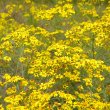
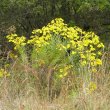
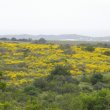

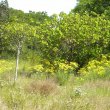
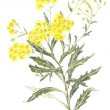


Discuss this plant
Share knowledge, ask a question or give an experience.